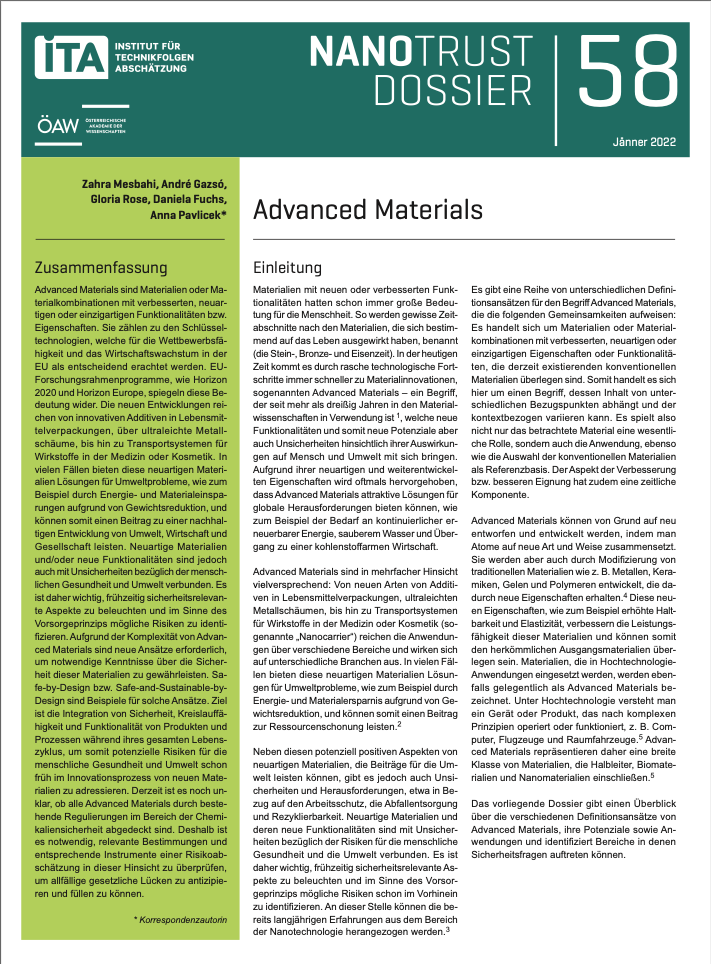
ITA Nanotrust Dossiers, pp. , 2024/02/15

Nanocarriers are innovative delivery and encapsulation systems with different chemical compositions and structures and are classified as advanced materials. They are used in a variety of applications, especially in medicine, cosmetics, and agriculture, as well as in food supplements and household products. Nanocarriers can protect sensitive active ingredients, delay their release, and even enable targeted delivery to the site of action, thereby increasing effectiveness and reducing any side effects. In the scientific literature, the term “nanocarrier” covers not only nanomaterials up to a size of 100 nm according to the definition proposed by the European Commission, but also structures up to 1,000 nm. At present, there is no uniform definition or categorisation of nanocarriers. In this dossier, they are classified on the basis of their origin and chemical composition, and categorised as organic, inorganic, and hybrid systems (material combinations of organic and inorganic materials) as well as supraparticles. To date, there has been little research on how nanocarrier systems behave in the various environmental compartments (soil, water, air). Analytical challenges and the lack of standardised test protocols make comprehensive risk assessments difficult.